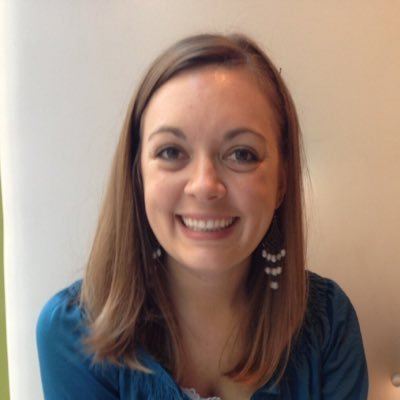 By: Jessica O’Toole, Ed.D.
By: Jessica O’Toole, Ed.D.
The best part of education is that we get a new start every year. In August, we come into the school year feeling revitalized, energized, and excited for a fresh start with students. Each August, I feel a mixture of excitement and anticipation for the new year; I spend a lot of my time reflecting on the previous year and planning for the year ahead. After this last year in education during the global pandemic, I have been wondering what made last year feel so different from my previous 15 years in education. When I think of my work with teachers last year, I find myself thinking about a trend that I have noticed, all conversations centered on measuring our impact on student learning. Over the past few years, we were just struggling with figuring out how to keep moving forward when our classes went remote, or we were missing many students due to illness. As the world slowly returns to normal, I reflect on how to recalibrate our thinking so that we are starting to spend more time measuring our impact on student learning. I am committing this year to refocus on the basics, the solid instructional practices that produce results and enable students to succeed; I find myself shifting my perspective from the newest educational practices to how to measure the impact of teaching (Hattier & Zierer, 2018). When we shift our perspective to focusing on what our students understand and our impact on their learning, the instructional practices we choose become easier to identify.
In order to grow in our ability to assess our impact on student learn
ing, three structures need to be in place. The first is to start by analyzing the curriculum and standards so that there is a clear understanding for both the teacher and students around what mastery will look like and develop a learning progression to help students move towards mastery. Secondly, we need to plan for a robust menu of formative assessments to evaluate students' level of understanding of the content. Lastly, we need to develop a collaborative community to help analyze and evaluate the students’ understanding in order to gain insight into what they know and where they are still struggling with mastery.
Over my years in education, I have found that whenever I mention analyzing the standards, it is often met with annoyance and frustration by many experienced teachers, especially teachers who have taught the same content for some time. Understandably, it can feel like a waste of time when teachers feel confident that they know what they are teaching and understand the learning progression they have used to help students achieve mastery. However, we must analyze the standards and curriculum every year, so we don’t become comfortable with the familiarity. When we become comfortable with the standards, it is easy to allow content slippage to happen, where we unintentionally start to focus on specific aspects of the standards and content and unintentionally allow other parts of the standards to slip away from our focus, therefore becoming an area of weakness in instruction (Fisher, Frey, Almarode, Flories, & Nagel, 2020). We need to analyze the standards every year so that we ensure that we are hitting mastery for every component of the standard. We also need clear learning progressions to help students achieve mastery. A learning progression will break down the necessary subskills students need and create a logical pathway with these subskills for students to move towards mastery (Popham, 2008). For experienced teachers, this is an excellent opportunity to reflect on what our students did last year and consider whether our learning progressions are serving them or need to be tweaked to better meet the student's needs. Through the iterative process of continually analyzing the standards and our learning progressions, we can ensure that we continue to provide our students with the most effective route to mastery.
 The next step in assessing our impact on student learning is considering how we will assess what students understand. As many educators know, we need formative assessments to help us evaluate where students’ understanding of the concepts lies and to assess the areas that need more support to get to mastery and the areas that need extensions because students have already reached mastery. Unsurprisingly, formative assessments are one of the most impactful strategies we can use around student learning (Hattie & Zierer, 2018). While formative assessments are not a new idea to teachers, it is one that we should revisit at the beginning of the year as we think about setting up our classroom instruction. We need to have a clear plan of how we want to assess students often and regularly so that as we set up classroom routines, it becomes a routine that students come to know and expect. For example, some teachers choose to start their class every day with a quick three to five question quiz on the learning from the day before, some teachers opt for a more traditional quiz at the end of every topic, while other teachers choose for daily exit tickets to gather a quick snapshot of what students understand from that day of learning, and other teachers choose a combination approach. The approach is not necessarily important; what is important is establishing a routine so that formative assessments are a daily process that gives the teacher and the students timely feedback on the learning progression so that adjustments can be made to instruction.
The next step in assessing our impact on student learning is considering how we will assess what students understand. As many educators know, we need formative assessments to help us evaluate where students’ understanding of the concepts lies and to assess the areas that need more support to get to mastery and the areas that need extensions because students have already reached mastery. Unsurprisingly, formative assessments are one of the most impactful strategies we can use around student learning (Hattie & Zierer, 2018). While formative assessments are not a new idea to teachers, it is one that we should revisit at the beginning of the year as we think about setting up our classroom instruction. We need to have a clear plan of how we want to assess students often and regularly so that as we set up classroom routines, it becomes a routine that students come to know and expect. For example, some teachers choose to start their class every day with a quick three to five question quiz on the learning from the day before, some teachers opt for a more traditional quiz at the end of every topic, while other teachers choose for daily exit tickets to gather a quick snapshot of what students understand from that day of learning, and other teachers choose a combination approach. The approach is not necessarily important; what is important is establishing a routine so that formative assessments are a daily process that gives the teacher and the students timely feedback on the learning progression so that adjustments can be made to instruction.
Lastly, we need to create a community of collaboration to aid in the analysis and reflection of our instruction to help each other learn and grow in the practice of teaching. Teachers benefit from collaborative work when collaboration is viewed as a form of discussing ideas, raising questions, examining different perspectives, and raising curiosity around instructional practices and formative assessments (Little, 1987). However, it is not enough to just collaborate; we need to establish expectations around collaboration that push us to question our work and consider alternative approaches. When we approach collaboration with the intention of learning and growing, it sets a different tone for the time we spend together. As we think about starting the school year, we must put time and effort into how we set up our collaborative relationships with colleagues so that we can create a space where we have authentic and meaningful conversations around the data we collect from our students with the purpose of learning and growing in our professional practice.
As you reflect on the upcoming year, what are your next steps for thinking through how you want to assess your impact on student learning? The structures we put in place now, when we feel refreshed and excited at the beginning of the year, will serve us well as we move into the busy school year. How will you create space and time in your year to analyze the standards and learning progressions, think through formative assessment routines and develop authentic and meaningful collaboration with colleagues?
References
Fisher, D., Frey, N., Almarode, J., Flories, K., & Nagle, D. (2020). PLC+ better decisions and
greater impact by design. Thousand Oakes, California: Corwin A Sage Publishing CO
Hattie, J & Zierer, K. (2018). 10 Mindframes for visible learning: teaching for success. New York, NY: Routledge, Taylor & Francis Group
Little J. W. (1987). Teachers as colleagues. In V. Richardson-Koehler (Ed.), Educators’
handbook: A research perspective (pp. 491-518). New York, NY: Longman.
Popham, W. J. (2008). Transformative assessment. Alexandria, VA: ASCD.
 Jessica O’Toole is a middle school assistant principal in the St. Vrain Valley School District. She has served as a teacher, instructional coach, and administrator. Jessica has her Ed.D. in Educational Leadership and Policy Studies from the University of Northern Colorado.
Jessica O’Toole is a middle school assistant principal in the St. Vrain Valley School District. She has served as a teacher, instructional coach, and administrator. Jessica has her Ed.D. in Educational Leadership and Policy Studies from the University of Northern Colorado.

